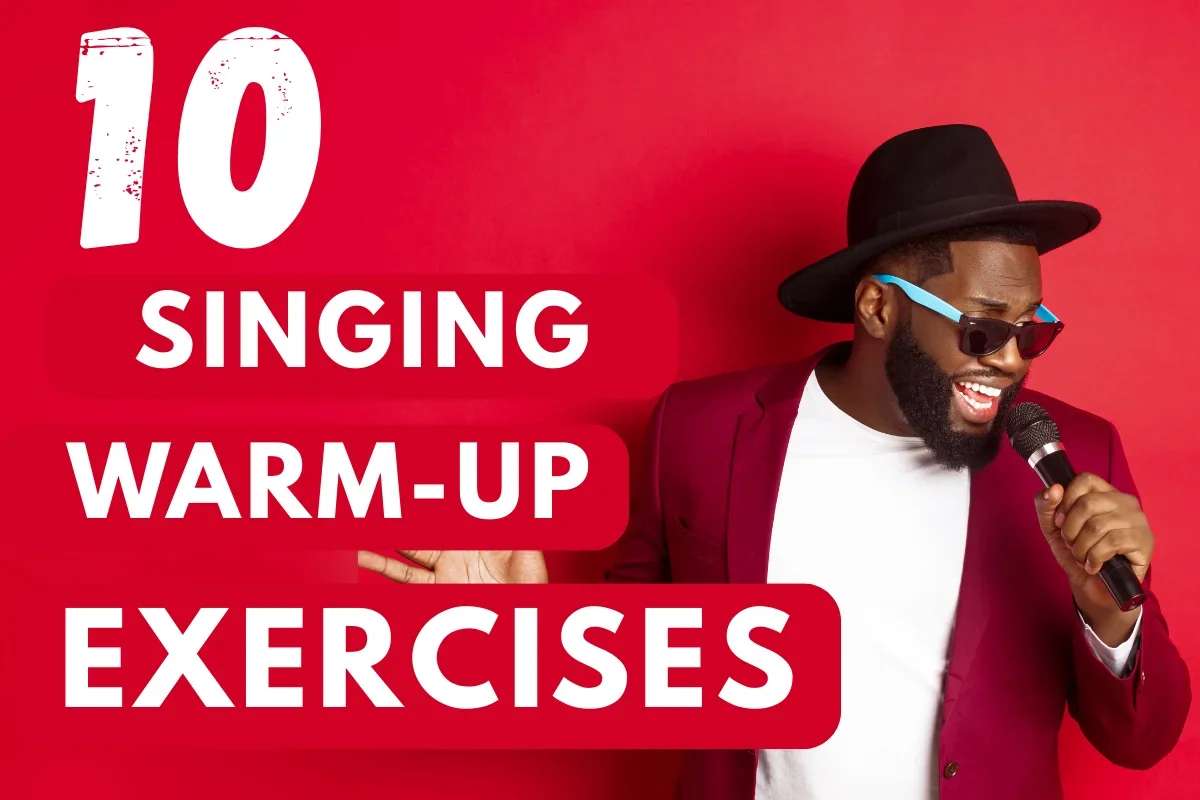10 Singing Warm-Up Exercises to Improve Your Voice Fast
It is common knowledge to any singer that good vocal health starts with a strong voice. Regular voice exercises and professional instruction will enable you to perform better in breath control, broaden your vocal range, and sing articulately.
Whether the scales you are singing, or lip trills, or tongue twisters, the right kind of exercise preps your vocal chords, soft palate, and facial muscles.
All the exercises are easy to use, safe, and effective exercises that singers at any stage can use. Use them step by step, tie together each warm-up exercise with the following voice practice, and you will see improvement after every session.
10 Essential Vocal Exercises to Strengthen Your Voice
Being a person who has trained many singers, I am aware of vocal health. The correct vocal strain avoids stress, boosts vocal range, and provides assurance. These exercises work all aspects of your voice- from warming up to cooldown.
1. Lip Trills
Why it matters: Lip trills are one of the safest ways to engage your vocal cords and facial muscles. They gently warm up your voice without strain.
How to do it:
Relax your lips and blow air to make them vibrate.
Glide through your chest voice, head voice, and mixed voice.
Start with short scales, then extend to longer singing session exercises.
Pro tip: Use lip trills as the first step in any practice. They prepare your voice for vocal warmup exercises and prevent fatigue.
2. Lip Rolls
Why it matters: Lip rolls release tension and engage airflow control, helping your soft palate and vocal cords function efficiently.
How to do it:
Roll your lips with controlled air while humming notes.
Move from low to high notes slowly, focusing on smooth transitions.
This exercise connects directly to improving vowel sound clarity and maintaining vocal health.
3. Sirens Exercise
Why it matters: Sirens strengthen your vocal range and smooth transitions between registers.
How to do it:
Slide from your lowest note to your highest in one continuous sound.
Repeat in short bursts, keeping tension minimal.
Expert tip: Integrate this into your warm-up to enhance control in mixed voice singing. It also preps your voice for longer singing sessions.
4. Vocal Straw Exercise
Why it matters: Singing through a straw balances pressure on the vocal cord, improving resonance and protecting your voice.
How to do it:
Sing a scale or simple melody into a straw.
Keep airflow steady and feel vibrations in your facial muscles.
This exercise helps expand your vocal range safely and enhances overall voice training efficiency.
5. Singing Scales
Why it matters: Practicing singing scales builds control, pitch accuracy, and flexibility across your vocal range.
How to do it:
Choose major or minor scales.
Focus on proper breath and clear vowel sound for each note.
Start slow, then gradually increase speed.
Consistent scale practice connects directly to stronger voice training results. It’s a core routine for professional singers and beginners alike.
6. Tongue Twisters
Why it matters: Tongue twisters strengthen articulation, consonant sound, and nasal consonant sound, improving clarity in singing.
How to do it:
Pick a simple phrase and repeat it slowly, then faster.
Include tricky consonants and tongue trills.
This exercise ensures that your audience hears every word clearly. It also supports better results in vocal warm-up exercises.
7. Lip Buzz with Pitch Slides
Why it matters: Lip buzz combines lip trills with pitch variation to improve flexibility and breath control.
How to do it:
Buzz your lips while sliding between low and high notes.
Focus on smooth, tension-free transitions.
Regular practice strengthens chest voice, head voice, and mixed voice, making your singing more versatile
8. Breathing Exercises
Why it matters: Strong singing depends on lung capacity and proper breath support.
How to do it:
Inhale deeply, hold briefly, then exhale slowly on a hum.
Repeat for 5–10 cycles, focusing on steady airflow.
Controlled breathing enhances all other vocal exercises. It also makes longer singing sessions more sustainable.
9. Mouth Closed Humming
Why it matters: Humming with your mouth closed engages resonance and strengthens your soft palate without straining your vocal cords.
How to do it:
Hum slowly through your vocal range, feeling vibrations in your face.
Keep your jaw relaxed and maintain steady airflow.
This connects directly to better releasing tension and prepares your voice for vocal cooldown.
10. Vocal Cooldown Hums
Why it matters: Ending your session with gentle vocal warm-up exercises prevents fatigue and maintains vocal health.
How to do it:
Hum lightly across your range.
Focus on relaxing facial muscles and the vocal cords.
A proper cooldown ensures your voice is ready for the next singing session. It also preserves long-term vocal range and performance quality.
Final Thoughts
All voice training aspects, such as warm-up, articulation, breath control, range expansion, and cooldown, are represented in these exercises. Being consistent with them, you will be sure to hear more control, more tonal clarity, and safer voice training.
The voice is the instrument. Strength exercises can achieve the most by protecting it, training it intelligently, and linking exercises together.
Ready to go beneath the surface? Check in Zoom Twin Cities to get personal singing classes and voice training. Our professional voice coaches take you through warm-ups, breath control, vocal exercises, and range building in such a way that you develop a strong voice in a safe and confident manner.
Sign up today and start turning your practice into real results. Every session brings you closer to mastering your voice.



